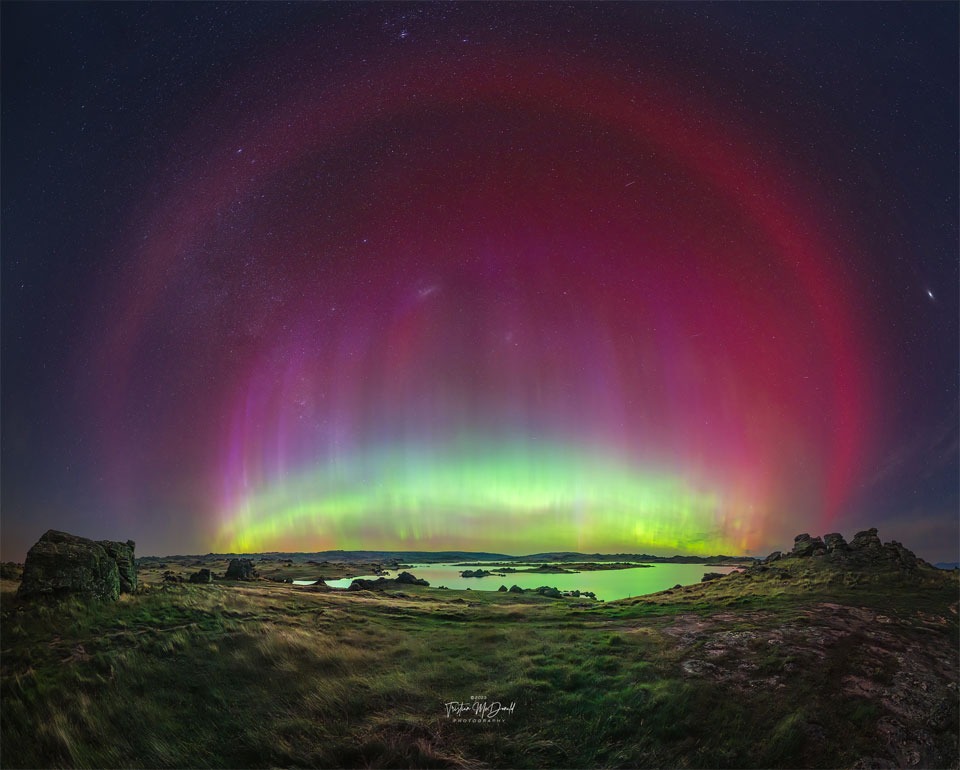奥塔哥尖塔石与银河
A skyscape is seen above an water inlet. Two rock spires rise from the sea, and the central band of our Milky Way Galaxy is seen between them. Please see the explanation for more detailed information.
一片水湾上方,天空景象清晰可见。两座尖塔石柱从海面升起,银河系的中央盘面位于其间。有关更多详细信息,请参阅说明。





